
An important goal of artificial intelligence is to develop models with strong generalization capabilities. In the field of natural language processing (NLP), pre-trained language models have made significant progress in this regard. Such models are often fine-tuned to adapt to new tasks.
Recently, researchers from Google analyzed a variety of instruction fine-tuning methods, including the impact of extensions on instruction fine-tuning. Experiments show that instruction fine-tuning can indeed scale well according to the number of tasks and model size, and models up to 540 billion parameters can significantly benefit. Future research should further expand the number of tasks and model size. In addition, the study also analyzed the impact of fine-tuning on the model's ability to perform inference, and the results are very attractive.
The resulting Flan-T5 has fine-tuned instructions for more than 1,800 language tasks, significantly improving prompts and multi-step reasoning capabilities. It can surpass GPT- 3 of 175 billion parameters.
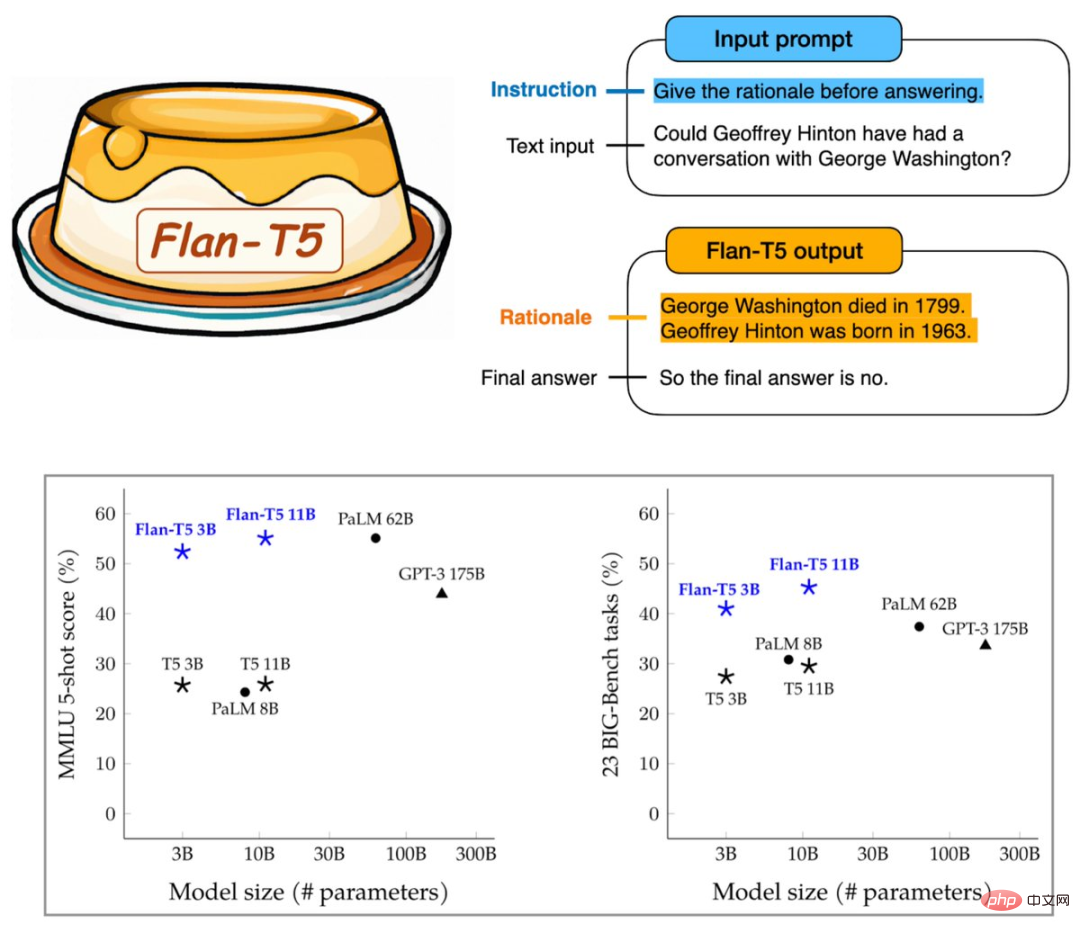
It seems that Google has found a direction to improve the capabilities of large models. However, this research not only attracted the welcome of the machine learning community, but also the complaints of Gary Marcus:

Google’s model Why did the birth date of Google's own famous scientist Geoffrey Hinton get wrong? He was obviously an old-timer born in 1947.
Quoc Le, chief scientist of Google Brain and one of the authors of the paper, quickly came out to correct the situation: the temporary worker picture was wrong, and the Flan-T5 model was not included in the paper. I got Geoff's birth date wrong, and there are pictures to prove it.
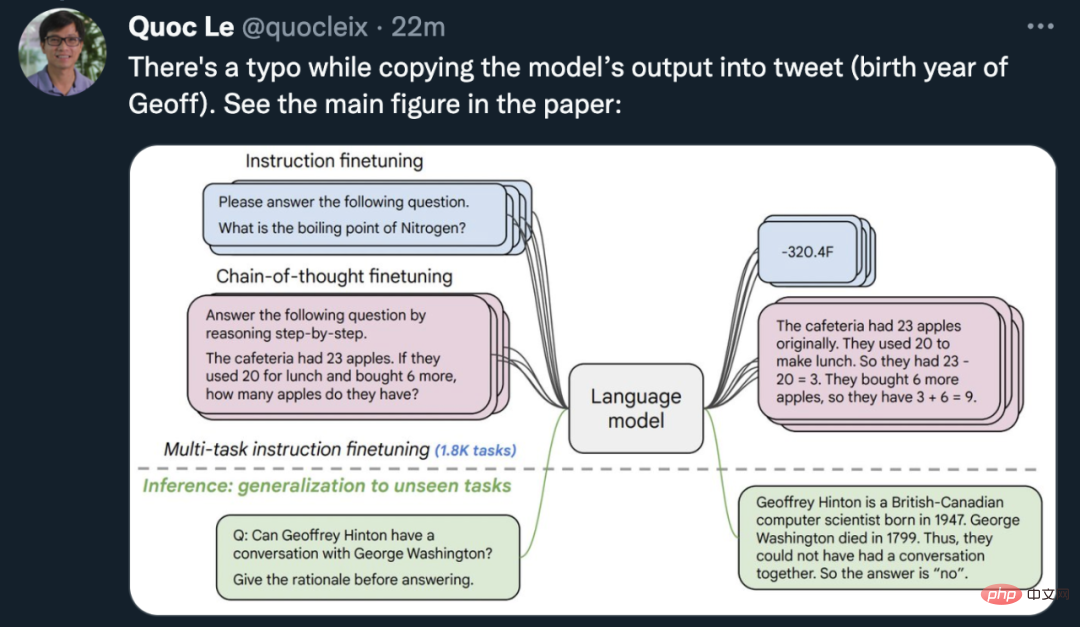
By the way, the famous AI scholar born in 1963 is Jürgen Schmidhuber.
Since it is not the AI model that is wrong, let’s see what changes Google’s new method can bring to the pre-trained model.
Thesis: Scaling Instruction-Finetuned Language Models
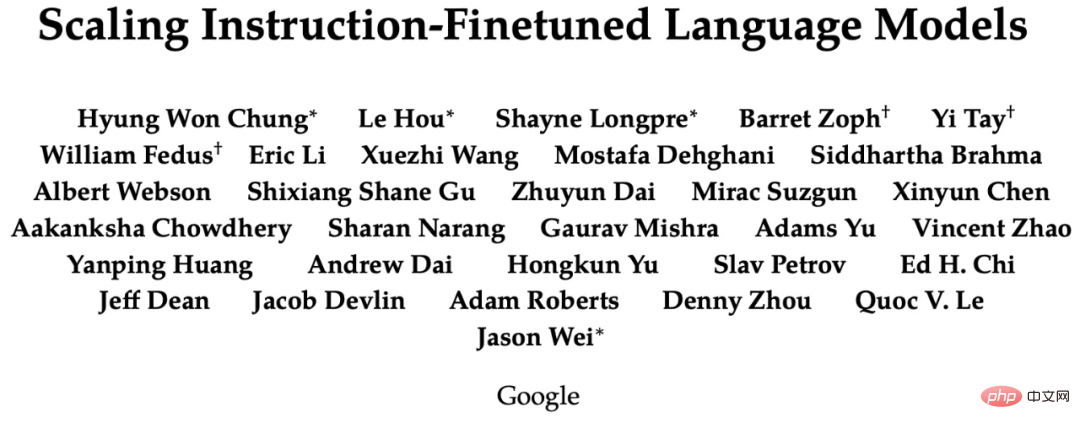
This study uses the 540B parameter model Training Flan-PaLM increases the number of fine-tuning tasks to more than 1800 and includes chain-of-thought (CoT; Wei et al., 2022b) data. The trained Flan-PaLM outperforms PaLM and reaches new SOTA on multiple benchmarks. In terms of reasoning capabilities, Flan-PaLM is able to leverage CoT and self-consistency (Wang et al., 2022c) to achieve 75.2% accuracy on large-scale multi-task language understanding (MMLU; Hendrycks et al., 2020) Rate.
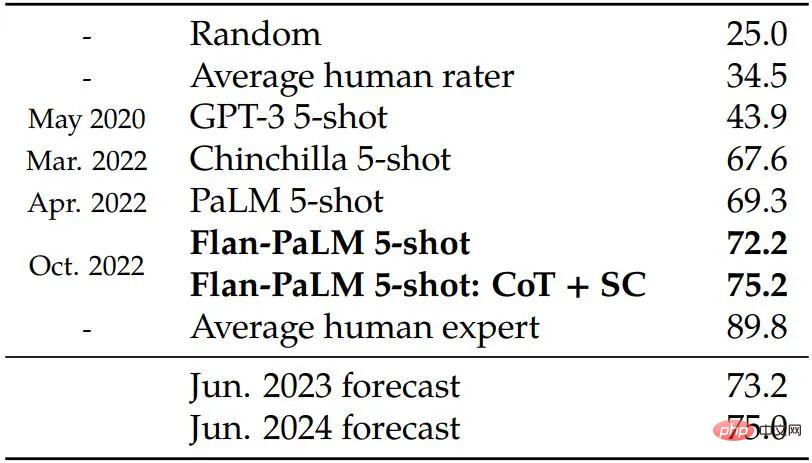
In addition, Flan-PaLM significantly outperforms PaLM on a set of challenging open-ended generative problems, with significantly improved usability.
Overall, this Google study illustrates specific ways to use instruction fine-tuning to improve model performance.
MethodSpecifically, this research mainly focuses on several aspects that affect instruction fine-tuning, including: (1) expanding the number of tasks, (2) expanding the model size , and (3) fine-tune the thought chain data.
The study found that instruction fine-tuning with the above aspects significantly improved various model classes (PaLM, T5, U-PaLM), prompting settings (zero-shot, few-shot, CoT) and evaluation benchmarks (MMLU, BBH, TyDiQA, MGSM, open generation). For example, Flan-PaLM 540B with instruction fine-tuning significantly outperforms PALM 540B on 1.8K tasks (9.4% on average). Flan-PaLM 540B achieves state-of-the-art performance on several benchmarks, such as 75.2% on five MMLUs.
The researchers also disclosed the Flan-T5 checkpoint, which achieves strong few-shot performance even when compared to larger models such as PaLM 62B. Overall, instruction fine-tuning is a general approach to improve the performance and usability of pre-trained language models.
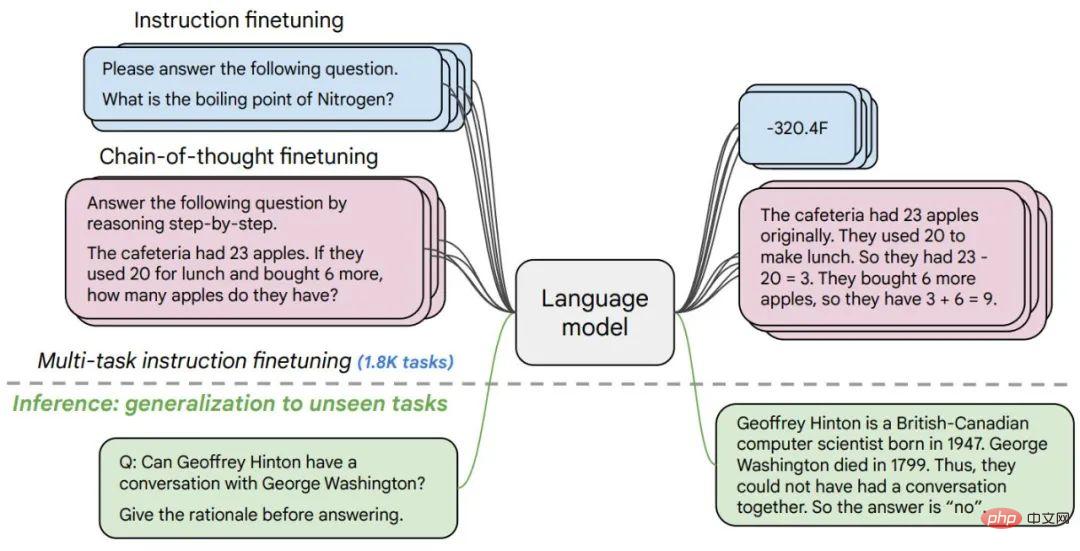
Figure 1. Researchers have fine-tuned various language models in more than 1,800 tasks. Fine-tuning in the absence of samples (zero and few samples) and with/without thought chains enables generalization across a range of evaluation scenarios.
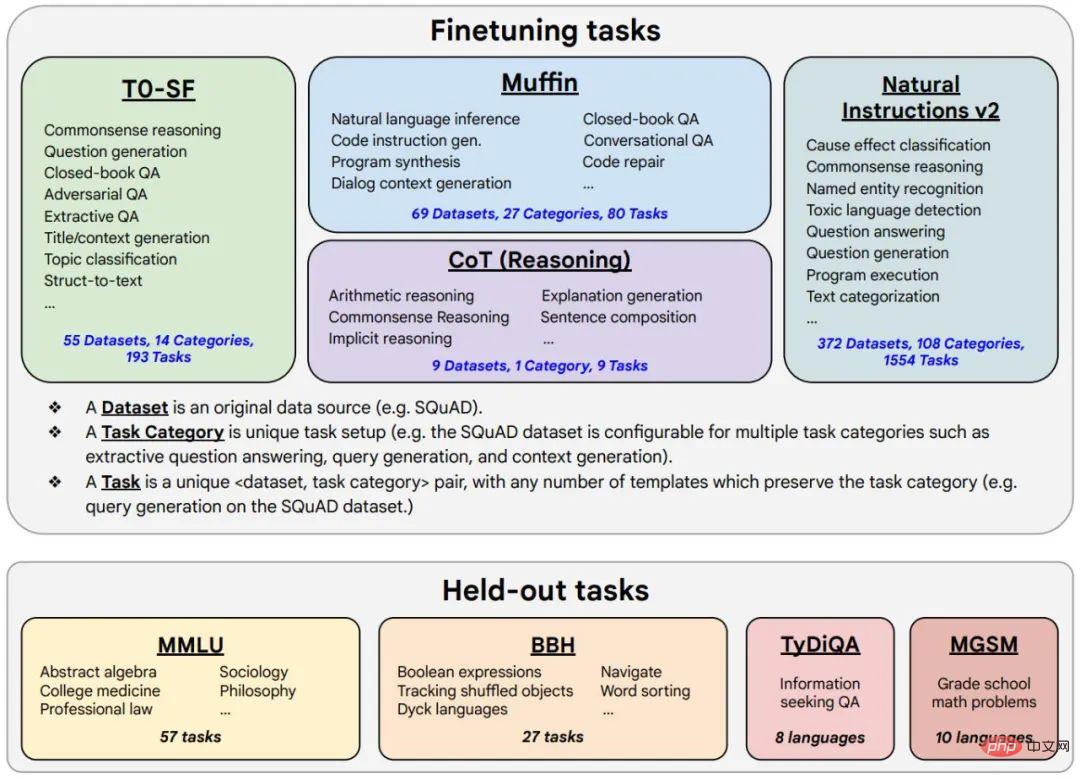
Figure 2. Fine-tuning data includes 473 datasets, 146 task categories and a total 1836 tasks.
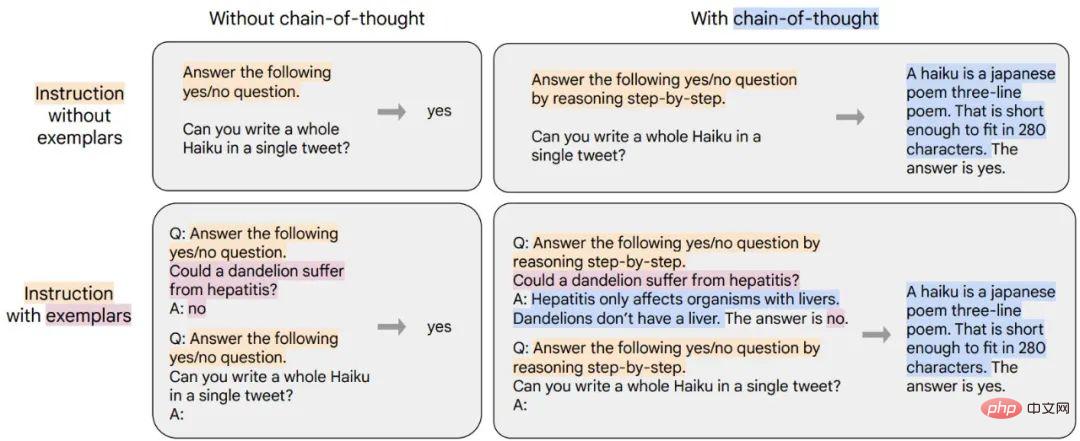
After the data fine-tuning and program fine-tuning processes are completed, the researchers compare scale expansion based on the performance of the model size on the task Impact. First, for all three model sizes, multitasking instruction fine-tuning results in large performance improvements compared to no fine-tuning, with gains ranging from 9.4% to 15.5%. Second, increasing the number of fine-tuning tasks can improve performance.
Finally, we can see that increasing the model size by an order of magnitude (8B → 62B or 62B → 540B) can significantly improve the performance of both fine-tuned and un-fine-tuned models.
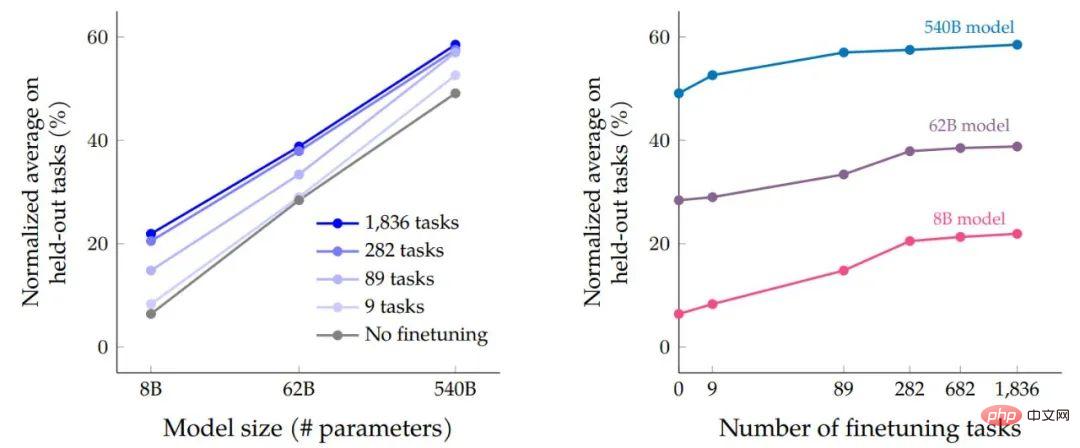
The impact of multi-task instruction fine-tuning on accuracy relative to model size (amount of parameters) and the number and scale expansion of fine-tuning tasks Influence.
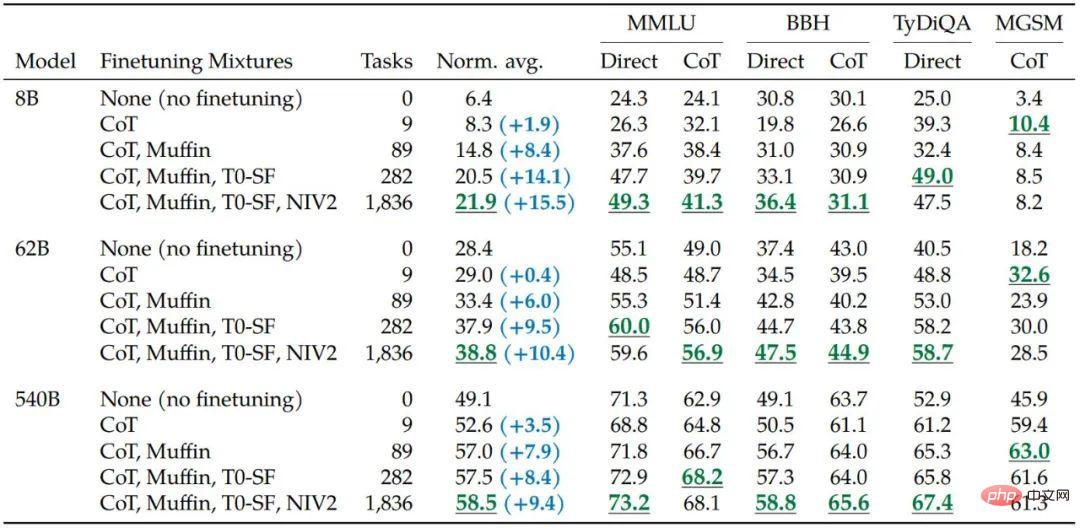
Increasing the number of tasks in the fine-tuning data improves Flan-PaLM on most evaluation benchmarks performance.
# Researchers demonstrate that including nine datasets annotated with Chains of Thoughts (CoT) in a fine-tuning mix improves inference capabilities. The table below shows that Flan-PaLM's CoT prompting capabilities outperform PaLM on the four retained evaluation benchmarks.
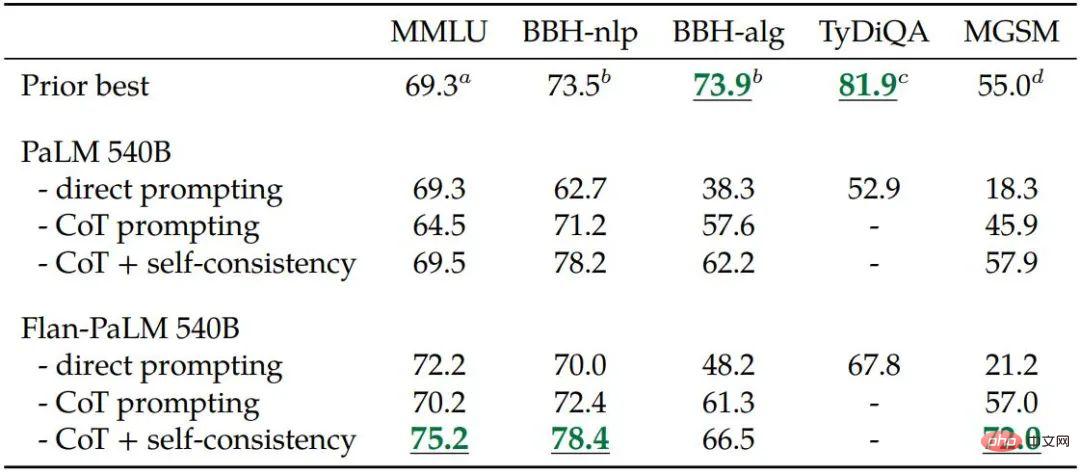
This study found that another benefit of fine-tuning instructions for CoT data is that it can achieve zero-shot inference. The model does not target CoT generates inference capabilities on its own with just a few samples, which may require extensive engineering tuning to implement correctly.
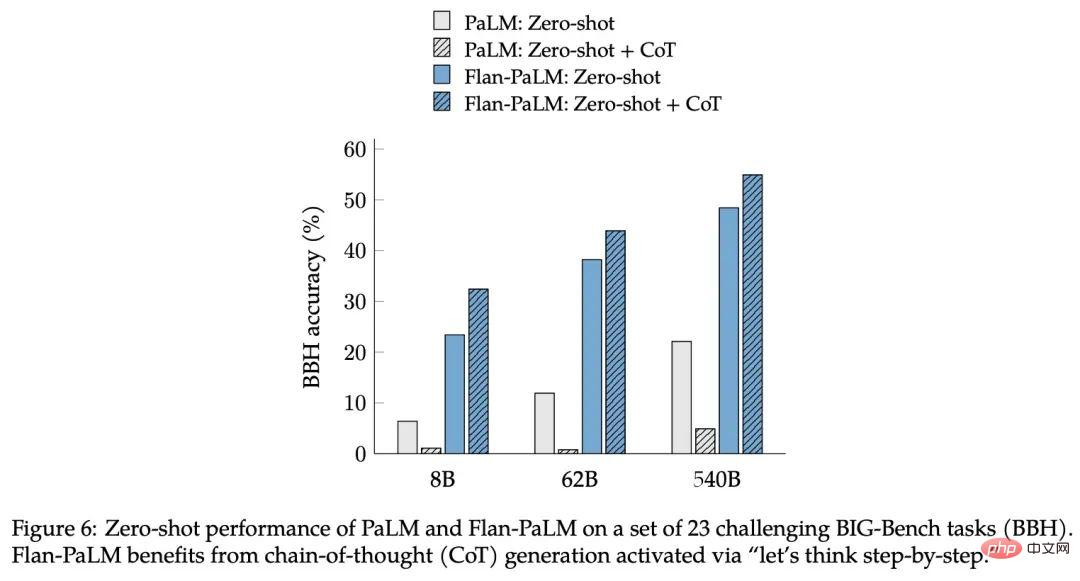
Figure 6: PaLM and Flan-PaLM on a set of 23 challenging BIG-Bench tasks (BBH ) zero-shot performance on. Flan-PaLM requires the generation of a Chain of Thoughts (CoT) activated by the "Let's think step by step" command.
To demonstrate the generality of the new method, Google trained T5, PaLM and U-PaLM, covering a range of model sizes from 80 million to 540 billion parameters, and found that all models can significantly improve performance.
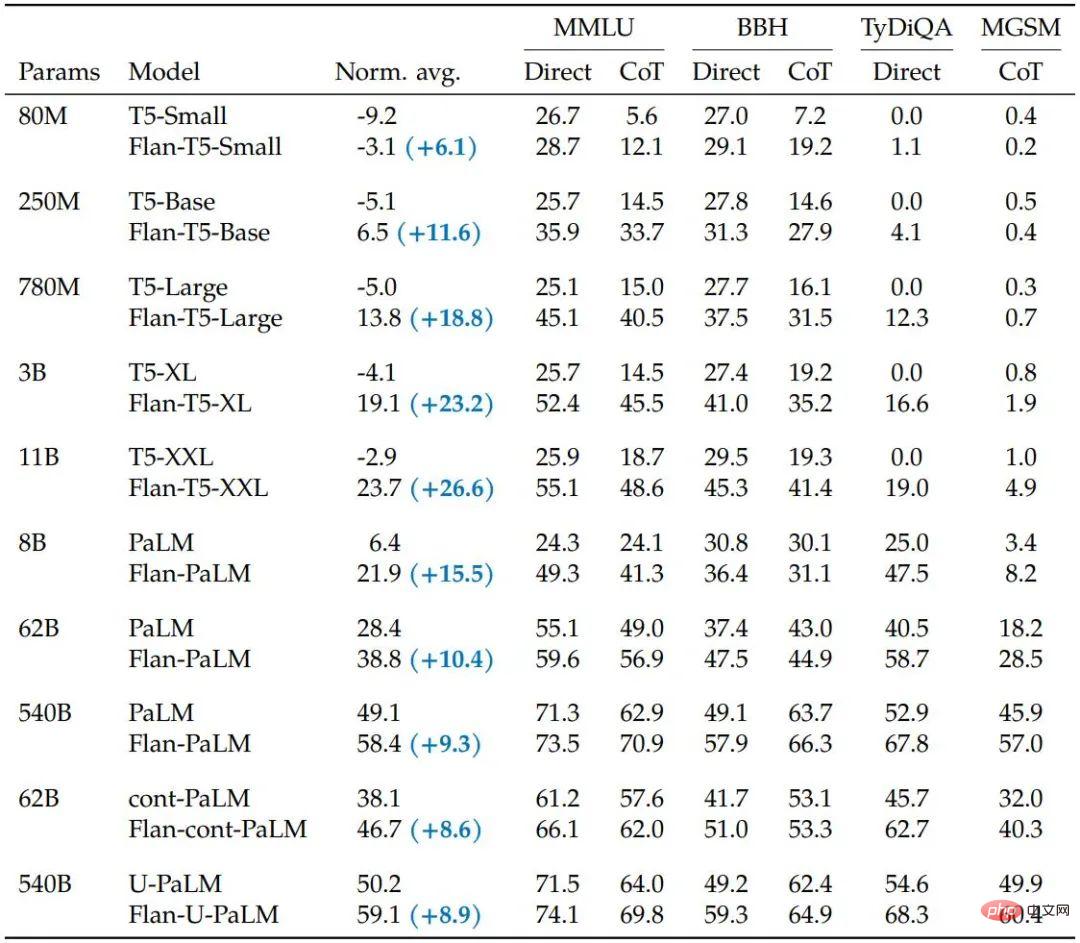
Table 5. Instruction fine-tuning (Flan) improves performance over other continuous pre-training methods.
After testing, instruction fine-tuning significantly improved the normalized average performance of all model types, and the T5 model benefited from instruction fine-tuning compared to non-fine-tuned models. most. These results are quite strong for some benchmarks - for example, Flan-T5-XL achieved an MMLU score of 47.6% with only 3 billion parameters, surpassing GPT-3's 43.9% score with 175 billion parameters.
In addition to NLP benchmarks, language models are capable of generating long-form answers to open-ended question requests. In this regard, standard NLP benchmarks and the automated metrics used to evaluate them are insufficient to measure human preferences. The researchers evaluated this, creating an evaluation set of 190 examples. The evaluation set consists of questions posed to the model in a zero-shot manner across five challenging categories of 20 questions each: creativity, contextual reasoning, complex reasoning, planning, and explanation.
For 60 of these examples (from the complex reasoning, planning, and explaining categories), the study created a link with a thought chain trigger phrase (e.g., “Let’s think step by step. ”), as another evaluation of whether fine-tuning is done with zero-shot enabled on CoT. In addition to the 160 zero-shot inputs mentioned above, the study also included 30 inputs to test the few-shot capabilities where strong language models without instructional fine-tuning have been shown to perform well.
Researchers believe that both instruction fine-tuning and scale expansion can continuously improve the performance of large language models, and fine-tuning is crucial for reasoning capabilities and can also generalize model capabilities. By combining instruction fine-tuning with other model adaptation techniques such as UL2R, Google proposes the strongest model Flan-U-PaLM in this work.
Importantly, instruction fine-tuning does not significantly increase computing costs like model scale expansion. For example, for PaLM 540B, instruction fine-tuning only requires 0.2% of pre-training calculations, but it can Improves the normalized average across evaluation benchmarks by 9.4%. Small models that use directive nudges can sometimes outperform larger models without nudges.
For these reasons, researchers recommend instruction fine-tuning for almost all pre-trained language models.
The above is the detailed content of 3 billion outperformed GPT-3's 175 billion. Google's new model caused heated discussion, but it got Hinton's age wrong.. For more information, please follow other related articles on the PHP Chinese website!
 What is a servo motor
What is a servo motor
 Introduction to SEO diagnostic methods
Introduction to SEO diagnostic methods
 What does data encryption storage include?
What does data encryption storage include?
 What are the main differences between linux and windows
What are the main differences between linux and windows
 A memory that can exchange information directly with the CPU is a
A memory that can exchange information directly with the CPU is a
 How to open mds file
How to open mds file
 Change word background color to white
Change word background color to white
 What are the development tools?
What are the development tools?




